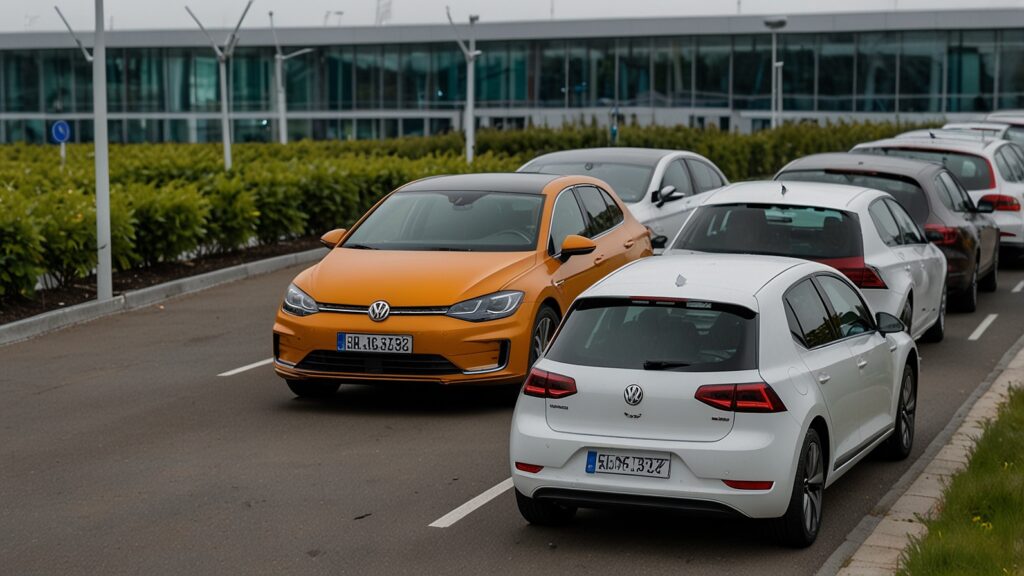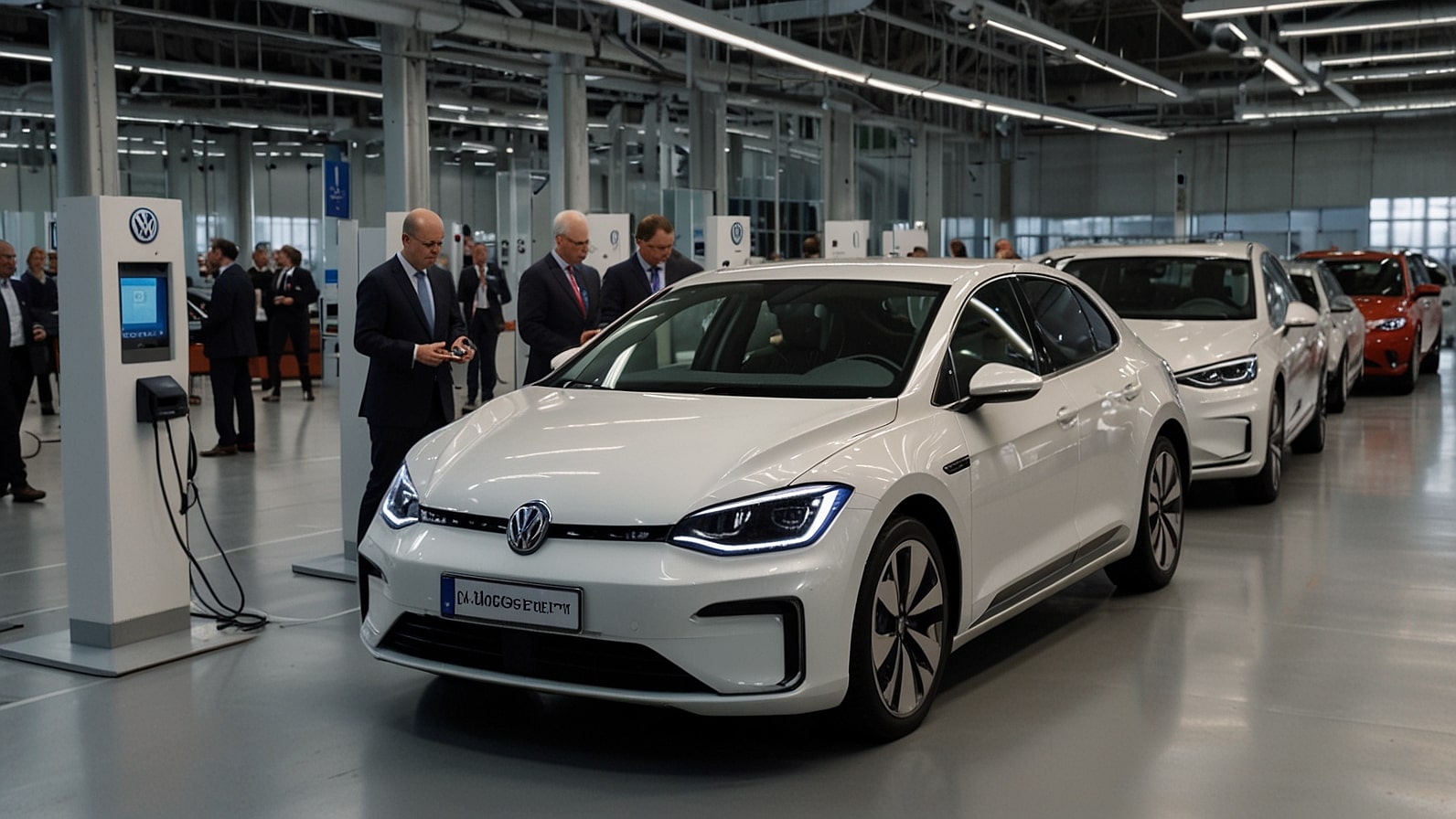European giant carmaker Volkswagen AG has presented an ambitious efficiency push that aims to reduce costs by EUR10 billion in the coming few years, which is an announcement of a turning point in responding to the increasing intensity of competition in the world, as well as a quick switch to electric vehicles.
The program is outlined in an extensive internal strategy update that it has issued today, highlighting the company’s willpower to regain profitability in a tough business setting.
The strategy is aimed at the optimisation of operations in the extensive portfolio of Volkswagen, consisting of such iconic brands as Audi, Porsche, and Skoda.
The main practices are optimisation of the supply chains, improvements of the efficiencies of the production and intense investments in the technologies of the batteries and the software development.
This is after the German automotive giant has been struggling to cope with the lack of growth in major markets, an increase in raw material costs, and government transportation pressures on more environmentally sustainable mobility.
The reorganisation of Volkswagen was referred to as a long-term resilience by the CEO of Volkswagen, Oliver Blume. According to a virtual discussion about sustainable mobility, Blume said the company is at a crossroads where audacious moves will characterise our future leadership.
The EUR10 billion objective is based on continuous restructuring initiatives; initial savings are expected to be realised in 2026 in the form of lower overheads and more intelligent use of resources.

Battling Headwinds in an Unstable Auto Environment
The automotive industry in Germany, which forms the backbone of the economy in the country, is experiencing unparalleled turmoil. The news at Volkswagen comes at a time when the industry is facing greater woes, such as declining demand in China, where the company is the largest auto market in the world and the worsening trade relations that can disrupt exports. Internally, the prices of energy and the shortage of skilled labour have put pressure on manufacturers.
The strategy revolves around the company’s ambitions for electric vehicles (EVs) in the company. VW will use a large amount of savings to develop its ID. family of all-electric models, and its plants in Zwickau and Emden will begin to produce more units.
The company also hopes to have EVs comprise 70% of its sales in Europe by 2030, compared to the present levels of about 20%. There are no risks that this pivot will be without in the recent quarters; software rollouts and quality issues in new models continue to be a problem.
Wolkswagen in its financial results recorded a slight improvement in third-quarter revenues, which were boosted by luxury brands such as Porsche.
Operating margins are, however, operating at under 7, which is nowhere near the high pre-pandemic levels. It is a cost-cutting plan that aims to restore the business to a level of double-digit margins by 2028, by implementing strategies such as the consolidation of procurement and dealer network digitalisation.
Implications on the Workforce and Union Dynamics
The human impact on the planet is in the shadows. Being the largest private employer in Germany with a workforce of more than 670,000 employees across the globe, Volkswagen has always been a company that values job security.
However, mutters of changes in the workforce have become increasingly noticeable. The strategy document foreshadows the idea of rightsizing some operations, which could touch thousands, both in administration and in legacy combustion-engine positions.
Labour leaders, such as IG Metall, which is the powerful union, have raised their voice but promised to collaborate in case transitions are undertaken in a fair manner.
Voluntary severance packages and EV assembly and digital skills retraining packages are in negotiations. Blume advocated the socially responsible way, based on a lesson of the 2015 Dieselgate scandal, which cost billions of dollars and destroyed trust.
This is against the backdrop of belt-tightening in the sector. Competitors, such as Mercedes-Benz and BMW, are also tuning back, with new announcements of cost cuts that never went as far as express layoffs.
In the case of Volkswagen, the stakes will be greater; otherwise, the company will lose ground to new, agile competitors such as Tesla and Chinese newcomers BYD.
The Great Recession and the New Deal: A Comparative Study
In addition to austerity, the restructuring adds new capital to innovation centres. In an effort to bridge the Silicon Valley counterparts, Volkswagen in Munich (Software Mobility unit) will be allocated EUR2 billion towards autonomous driving technology and over-the-air updates.
The partnership with Northvolt on battery and QuantumScape on solid-state development is gaining traction and is rumoured to introduce changes in the range and charge time.
The concept of sustainability permeates all pillars. The company is committed to being carbon neutral by 2050, and in the meantime, 30% of recycled materials in vehicles by 2030. This is in line with the EU requirements and the attractiveness to the environmentally conscious buyer, especially in the high-end markets where the Taycan EV by Porsche has taken off.
Realignment of Globals and Market
The international strategy of Volkswagen is worth attention. In North America, where there are tariffs that are looming due to policy changes, the company is securing local production at its Chattanooga facility.
Asia is a battlefield, although a 10 per cent sales downturn in China last quarter has been seen, investments in joint ventures with SAIC are to localise EV products in areas that suit urban commuters.
Analysts perceive the EUR10 billion push to be an expedient turnaround. Volkswagen is shedding pounds to run toward electrification; this was observed by one of the industry players. It is all about execution- getting through supply-side shocks and geopolitical turmoil will put a test of will.
A Defining Moment for German Industry
This efficiency drive captures more general concerns in the economy of Germany, which is dominated by exports. The auto industry, or as it is known, the engine of Europe, has millions of employees and provides more than 5% of the GDP. The misfortunes of Volkswagen affect its suppliers as far from Bosch up to Continental.
To investors, the news created a 2% uptake of shares in the Frankfurt trade, which was a sign of wariness. Still, the way to go is risky; incorporating cost discipline and visionary R&D will either make it or break it, whether Volkswagen will become an EV giant or a lesson learned.
The world is staring at Wolfsburg in the shadows. It is not just a financial cleaning up, but a manifesto of a reinvention, which prepares Volkswagen to be the first in a zero-emission age.
Efficiency is the current driver of innovation in the future, as Blume described it. Bearing EUR10 billion, the future of the automaker is going to be very dramatic and full of more stakes.
